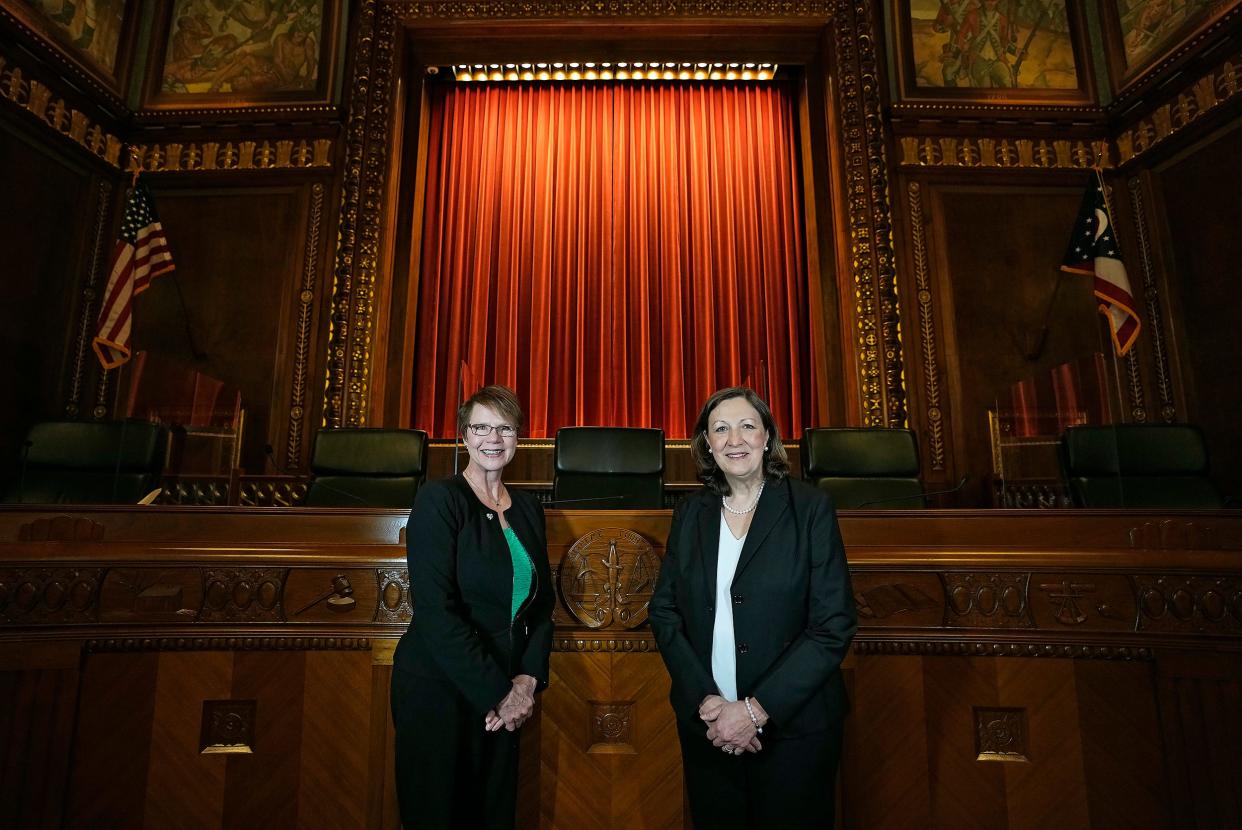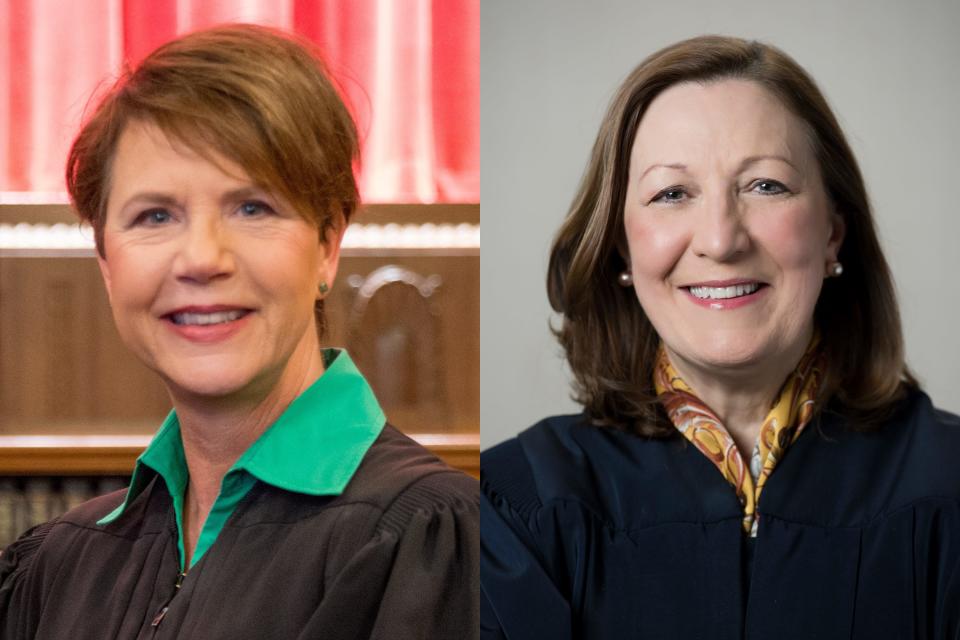Thomas Suddes: Justices less passive about lawmakers treating Constitution like Silly Putty

Twenty-three weeks from Tuesday, Ohioans will decide to re-elect or replace their governor and other elected statewide officials, and choose a U.S. senator.
At the moment, the GOP is better poised, with one exception, to outrun Democrats. That exception: Three state Supreme Court seats up for grabs this year.
The reason they’re more competitive is because voters don’t usually know much about Ohio judgeship elections, though they’ll know a bit more this year thanks to a change in ballot formats.
Thomas Suddes: Ohio Republicans fretting about next Supreme Court contests
Supreme battle
Two justices, Democrat Jennifer Brunner and Republican Sharon Kennedy, are vying to become chief justice. Two other associate justices, both Republicans, are seeking re-election – Justices R. Patrick (Pat) DeWine, Gov. Mike DeWine’s son, and Patrick F. Fischer.
The Democrat challenging Justice DeWine is Judge Marilyn Zayas of the Cincinnati-based Ohio Court of Appeals (1st District).
The Democrat challenging Justice Fischer is Judge Terri Jamison of the Columbus-based Ohio Court of Appeals (10th District).

More: How to submit guest opinion columns to the Columbus Dispatch
The GOP-run General Assembly has already tweaked the judicial ballot so, for the first time since before World War I, party affiliations will flank the names of Supreme Court and Ohio Court of Appeals candidates.
That may help voters decide who’s who, philosophically. Otherwise, contests for Supreme Court judgeships tend to be “low-information” races, where purported ethics forbid candidates to say much more than, “Hi, I’m Jane Doe, and I want to be – or remain – a judge. And that’s about all I can say.”
Ohio Supreme Court: 2022 election will bring different Ohio Supreme Court to ongoing redistricting battles
The reason Republicans didn’t leave the judicial ballot alone is that the Supreme Court has become less passive than it was about the General Assembly’s antics in treating the Ohio Constitution like Silly Putty.
Meanwhile, thanks in part to the FirstEnergy/House Bill 6 scandal, consumers have become more aware that the Supreme Court, even if in a limited way, may be all that stands between Ohioans’ checkbooks and Ohio’s utilities.

So there are a couple questions Ohio voters can ask, besides checking Supreme Court party labels, to suggest how a high court candidate might see the rights of injured people vs. insurance companies, and homeowners and renters vs. utilities.
Ohio Supreme Court: Who is running for Ohio Supreme Court? Ohio voters to decide balance of court this year
Tort reform telling issue
Question One is whether a candidate for the Supreme or Appeals court thinks legislators may or may not use “tort reform” to override the Ohio Constitution, which promises to every person, “for an injury done him in his land, goods, person, or reputation, … remedy by due course of law.”
The General Assembly has repeatedly undercut that guarantee by forbidding Ohioans injured by wrongdoers to collect the full amount of damages a jury awards. To give a condensed version of that history — of the General Assembly’s bias against injured people – here’s what former Justice Paul E. Pfeifer, a pro-plaintiff Bucyrus Republican, wrote in a 2007 dissent: “Between business interests and the people of Ohio, the legislature prefers business.” What do this year’s Supreme Court nominees say to that? (The evidence says Pfeifer’s right.)
Then there’s the so-called KECO doctrine, which Ohio’s Supreme Court has observed since the 1950s. The doctrine says that if a public utility is allowed (by the Public Utilities Commission of Ohio) to charge customers a rate that is later overturned by the courts, the utility must stop charging that rate – but the utility still gets to keep the overcharged amount.
That’s fair? No. That’s Ohio.
More on the Great Lake Compact
FOLLOW-UP: Last week’s recap of the Great Lakes Compact (shielding the lakes from water-raids by thirsty western states) should have credited then-Gov. Bob Taft and his aides for helping negotiate and win ratification of the agreement.
More: Protecting Great Lakes is important to Ohio and all of US
Taft, governor from 1999 through 2006, chaired the Council of Great Lakes Governors. He and key aides – then-Natural Resources Director Sam Speck and Taft’s chief policy adviser, Kate Bartter (now head of Ohio State’s Sustainability Institute) – helped negotiate the compact, which Ohio, the other Great Lakes states and Ontario and Quebec signed.
Taft and his administration’s work poised the compact for approval by the legislature and Taft’s successor, Gov. Ted Strickland. “We consider [the compact] one of the primary achievements of the Taft administration,” Bob Taft recently said. And he’s correct.
Thomas Suddes is a former legislative reporter with The Plain Dealer in Cleveland and writes from Ohio University. tsuddes@gmail.com
Get more political analysis by listening to the Ohio Politics Explained podcast
This article originally appeared on The Columbus Dispatch: Ohio Supreme Court: Conflict with GOP leaders raises election stakes

